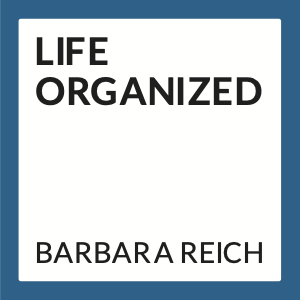
If you’re getting ready to move to a smaller home, the thought of downsizing can be overwhelming at first. The key is to get rid of the things you don’t need and consolidate what you have without tossing essential belongings.
This might sound simple enough, but it can be tempting to hold onto items you want without prioritizing space for the most important things. On the other hand, don’t get rid of everything. It feels good to purge, but make sure to leave yourself with more than two plates, four forks and three t-shirts. We gathered tips from a handful of experts to help you navigate through the downsizing process:
“People dread moving, but try and reframe your view. Look at is as a chance to ‘right size,’ to get clean and organized. It feels good to purge and get everything in order,” Jameson said.
That being said, deciding what to keep and what to get rid of before a move can still be a daunting task, so use our downsizing tips below to help you get through it efficiently.
Going through your entire home and your life is a big undertaking, but if you plan it out and take it slow, the process becomes more manageable. Start by choosing a date and putting it in your calendar. This will help you stick to the plan.
“Work in two- to three-hour blocks of time, focusing on one area at a time. More than that can be overwhelming and you won’t be as productive.”
Barbara Reich, Professional Organizer | Life Organized
Begin with the least-used areas of the home, since items in these areas are likely to be forgotten in your new home. This will be an easy way to get rid of a lot of items, giving you quick results to improve your motivation. Make sure to finish one room, closet or cabinet before moving to another space.
Moving to a smaller home means there are constraints to consider. With every item you go through, ask yourself, “Do I have space for this in my new home?” To do this, consider where you’re moving. Are you a senior moving to a facility that serves meals? You won’t need most of your kitchen items. Did you find a building or community with a fitness center? There’s no need for your gym equipment.
Try to avoid thinking about renting a storage unit for extra items. If it can’t fit in your new house, it’ll likely just collect dust in storage and add to your monthly bills. Find ways to implement better storage solutions in your smaller space. If there’s still no room, it’s time to let it go.
Pairing down your belongings may be as simple as pulling out the measuring tape. Don’t move anything that doesn’t have a designated space in your new home.
“Before the move, measure your furniture and find out what will fit in your new place and what won’t.”
Caroline Feeney, Managing Editor | HomeLight’s Seller Resource Center
It’s also a good idea to measure doorways and hallways to make sure large items can be moved without damaging doorframes and walls.
It’s important to keep the things you want, use, need and like to look at, but make sure you’re scaling it back.
Pro-Tip: An easy way to begin sorting through your belongings is to stick to the 12-month rule – if you haven’t used it at least once in the last year, it’s not coming with you to your new home.
Here’s a list from professional organizer Barbara Reich to help you pair down items.
Having a hard time paring down your items? Consider enlisting help from a third party.
“Professional organizers are neutral parties that can help you make objective decisions about your belongings. We can sort, box up and discard items quickly since we have no emotional attachment to the items. Although we respect that the client has an emotional attachment, it’s easier for us to make quick decisions to let things go.”
Candi Ruppert, Certified Professional Organizer | Sage Organizing Company
If you’re moving to a home with less bedrooms, there’s no reason to keep the extra sets of furniture. Not only will there be nowhere to put them, but they’ll cost extra if you’re hiring a moving company. If you’re downsizing your space but keeping the same number of rooms, look carefully at the floor plan and square footage of each room.
“Furniture appropriate for a living room in a larger home may not fit well in a condo. If you know where you’re moving, create a space plan and make sure your furniture fits comfortably. If certain pieces won’t fit, those are easy targets for the sell pile.”
Scott Roewer, Certified Professional Organizer | The Organizing Agency
You should also consider appliances. Does your new home come with a stove, refrigerator, washer and dryer? Don’t bring yours. Does the style clash with your vision? Get rid of the old set.


When you’re going through your belongings, decide what to keep and what to get rid of. Then you can further categorize those groups with the following tips, including disposal advice from certified professional organizer, Candi Ruppert.
Pro-Tip: Used color-coded sticker or tags on large items to help you keep track of what’s going where.
Ready to get rid of these items? Jump to see disposal options.
While it’s not a good idea to let the I-don’t-knows get too big, Jameson says it’s okay to start a maybe pile for the sake of momentum.
“Keep moving and putting things in piles. Stopping is your enemy, momentum is your friend. If you’re still having trouble when you come back to the maybes, remember to keep the few and small. Size matters when you’re downsizing. Then try this mantra: hanging onto the past robs me of the present.”
Marni Jameson, Lifestyle Columnist and Author | At Home with Marni Jameson
Here are a few common categories to help you quickly purge.
Are you reducing belongings from a walk-in closet? Purge enough so that you can fit everything into your new closet. This is a good place to use the 12-month rule.
Get rid of everything you forgot you had or that you only use sparingly. Bread makers and ice cream makers that don’t get used are just taking up valuable cabinet space.
It’s okay to keep your favorites if you’ll have room, but if you don’t reread or re-watch the title, there’s no point in letting them take up space in your new home. Be realistic about how much room you’ll have to store these things.
Do you still decorate for the all the holidays? If so, will you have the space to set up and store all your decorations in your new home? This is a good time to scale back your displays and dial down the number of light strings you have on hand.
Downsize your home office by going paperless. Scan important documents into your computer and save them in folders on your desktop or on a separate hard drive. You might also consider uploading pictures and files into a data center like the Cloud or a Google drive.
A lot of paper items like bills and bank statements can also be found online, so there’s no need to keep the paper copies. Many companies even offer incentives for switching to paperless billing. However, it’s still a good idea to hold onto some paper statements, like taxes and warranties. But if your taxes are older than seven years or you’re holding onto warranties for items you no longer have, send them to the shredder.
Consider donating anything you’re not keeping and that’s in good condition. You can give to charities like Goodwill, Salvation Army and Habitat for Humanity.
“Get in the generous spirit – a day of downsizing to you may be another family’s excitement over a free dining room table they couldn’t afford otherwise,” Freeney said.
If there are some items you can sell or you want to try to make some extra money, try hosting a garage sale. You can also sell items online through eBay, OfferUp, Craigslist and Facebook Marketplace.
Finally, anything left after downsizing, donating and trying to sell has no place left to go but the trash. Rent a dumpster for large items or use it to toss everything all at once.
Sentimental items are some of the hardest things to part with. But if it’s been years since your kids have flown the nest, they’re probably not missing their old trophies and stuffed animals.
“Give your kids a deadline to claim any relics you’ve stored from their childhood and let them know you’ll donate or toss anything that’s left.”
Caroline Feeney, Managing Editor | HomeLight’s Seller Resource Center
You’re going to run out of space for these childhood memorabilia in your smaller home. Hold onto a few precious mementos and get rid of the rest. It can be easier to get rid of these items if they go to someone you know. Give a book to a friend you know would enjoy it or pass an old doll onto a young neighbor.
“Other people’s memories are not your responsibility,” Reich said. “If your great aunt’s sterling silver tea set has become an albatross, it’s time to donate it or sell it. If a memory is worth preserving, treat it as such. Random boxes of pictures aren’t compelling, but an album of pictures, whether digital or a book, tells a story that can be enjoyed.”
Jameson suggests chronicling your memories in a downsizing workbook. This will help you hold onto precious mementos without cluttering up your new home. Take a picture of treasured item and cut a square from your child’s baby blanket. Keep them in a scrap journal to preserve the memories.
Once you get through this list, you will have successfully downsized your home. As tough as that is, there’s another test ahead – keeping your clutter at bay. Make sure you organize as you unpack and set accumulation limits for yourself. Really think before you buy new items – do you have space for something new, or are you willing to get rid of something else to make room for this new thing? As long as you keep a handle on your belongings, your downsized life will give you everything you need with room to spare.
Use these six ideas to keep a clutter-free home.





